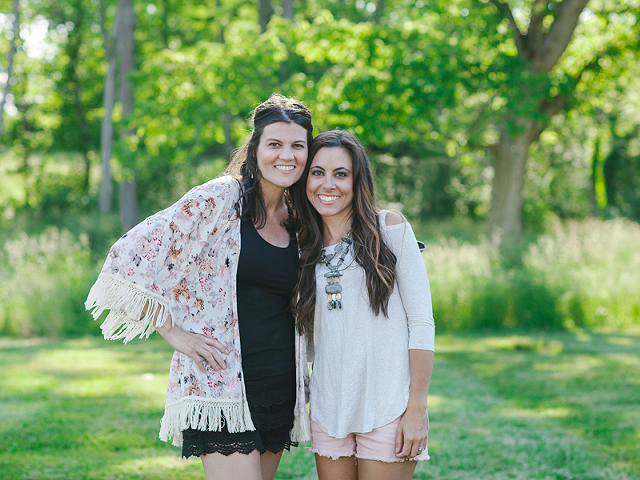
We may never know if it was the day Cady Heron of Mean Girls finally talked to Aaron Samuels in calculus class (she says “grool,” unable to decipher great and cool) or if it was Brangelina (Brad Pitt and Angelina Jolie) who popularized the portmanteau — a term for two words united as one. But we do know that it’s usually a fun way to combine two things we like, or maybe one thing we like and another we don’t. Example: glamping.
Glamorous camping, or glamping, is the latest way to enjoy the outdoors and it’s closer, cheaper and less pretentious than you’d think. Regular camping is all about doing it yourself: pitching a tent, starting a fire, hiking out to a nice spot and cramming things into a backpack. Glamping is about arriving to your destination with all of those amenities and more already set up for you.
“We are evolving in our travel and want experiences that are really meaningful,” says Linda Clark, director of sales at glamping.com. “People are looking for something more unusual and glamping is that, because you have that experimental component, but then you are staying in this awesome accommodation that would be very different from a hotel room.”
This “upscale version of camping,” as Clark puts it, is available in various forms, such as tree houses and trailers or cottages and tepees. But one in particular is growing in use and popularity: the yurt. And Hueston Woods State Park, in Butler County north of Oxford, has one. (It offers several no-tent-necessary overnight options.)
I know what you’re thinking. What is a yurt? Is it as dinky as it sounds? Can something called a yurt really be glamorous? Does it have windows? Is there a bed, a fridge? Is it safe? How is it different from staying in a tent? Does it even have Wi-Fi?
Well, to save you the trouble I braved this foreign structure for a night. But first, what is a yurt? (I had to look it up, too.)
Originally built by nomads in Central Asia, yurts were a portable way of life and shelter. Think tepee with more space and a solid foundation. Modern yurts, like the one at Hueston Woods, are constructed mostly of accordion lattice walls, wooden rafters and a weather-proof canvas cover. They range in size and usage but are always circular.
Personal, business and government use are three main categories cited by Alan Bair, president of Pacific Yurts Inc., the first company to modernize the yurt and also the constructor of the Hueston Woods one. They are often residential properties or temporary living for people who build rural homes, he said. They are also commonly used for yoga studios or artist studios while government use mostly falls under rentable structures for public parks.
Those seem to have growth potential. “I think that, for a lot of people, it’s having that comfort yet still hearing the rain or feeling the wind,” Bair says of the glamping attraction. “(You’re) feeling a lot closer to nature than you would in a typical cabin or house; it really provides best-of-both-world experiences.”
I knew this Hueston Woods yurt was going to go beyond my expectations when I received a pre-trip email welcoming me with no-cook recipes, to do lists, camping and safety rules — even one on how to cook comfort food at your outside campsite. I’m used to hiking a trail and pitching a tent, so grabbing my daypack and sleeping bag would leave me more than prepared, right? Well, kind of. I was prepared but not equipped.
The circular, canvas-covered shelter sits along a vast tree line on the RV campground and offers two futons, a mini-fridge, TV, DVD player and a microwave. Upon entering through the French doors I was immediately regretful for not bringing a movie. I thought, ‘Nah, I’ll be camping.’ I’ll want to enjoy the chirping crickets and bright stars, the pure darkness of night and the golden glow of the sunrise. But this was more than camping… it was glamping.
“Yurts are becoming a really popular overnight option for folks who want a camping experience and don’t want to bring all the gear,” says Heidi Hetzel-Evans, communications manager at Ohio State Parks.
Hueston Woods only offers one yurt for the time being, but Hetzel-Evans said over the last five to 10 years Ohio State Parks has continually been adding yurts to the reservation system. As of now, eight out of roughly 70 Ohio State parks have at least one yurt available for rent, making it a fairly exclusive experience. Her park’s yurt was occupied 126 of 184 rentable days last year.
So there I was, stuck with my granola and water in this exclusive, circular dome, staring out of the sunroof contemplating my choice of “gear.” You see, it’s not that you don’t have to bring any gear at all; it’s that you have to adapt the gear to your surroundings. For example, beer should have been involved. And everything else I strung along could have paralleled what I would have brought to a sleepover at age 12.
Nevertheless, it was an enjoyable experience. When I closed my eyes, I could feel the wind and hear the birds. I could smell fire smoldering and hear leaves rustling. The sound of rushing water lured me to a trailhead directly behind the yurt. I followed the steep trail into the woods and down to a creek, where I spent most of my time until dusk.
At first, I thought it was strange that the yurt was settled among a bunch of RVs, but I was thankful for the company as the sun went down. While I was preparing to start a fire in the nearby fire ring, numerous people stopped to ask me about the yurt.
Suddenly, I felt like the weird yurt lady, perched outside my dwelling, handing out history lessons, roasting marshmallows and merrily waving at passersby. The majority of questions mirrored my initial inquiries. It was comfortable and glamorous (no Wi-Fi, by the way) compared to tent camping, but when it comes down to it they are too different to compare.
That doesn’t mean a backcountry camper couldn’t enjoy a night in a yurt, however. Just about anyone could. ©






